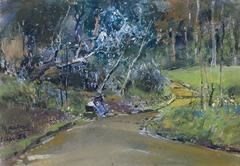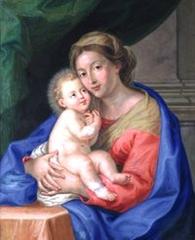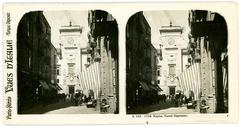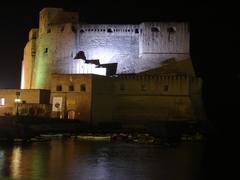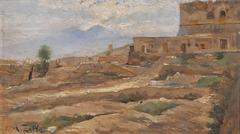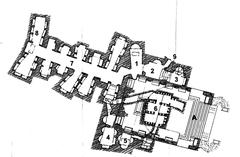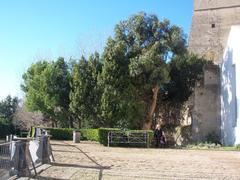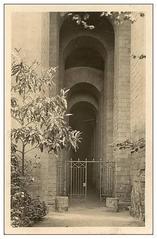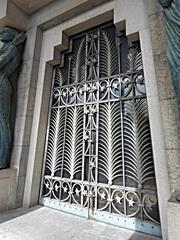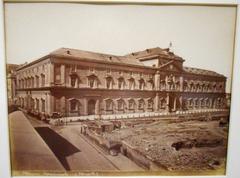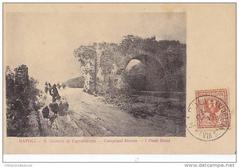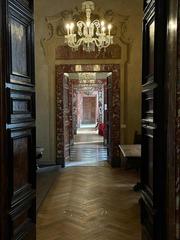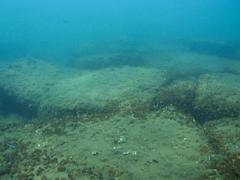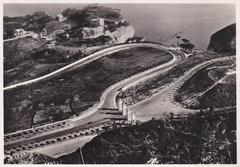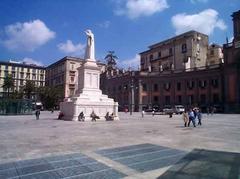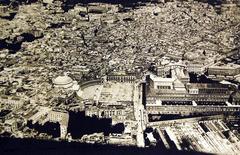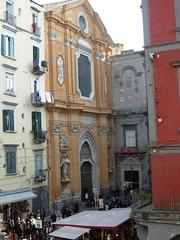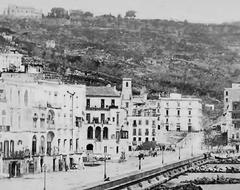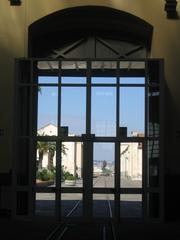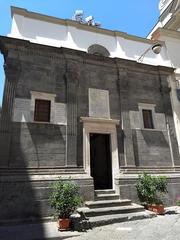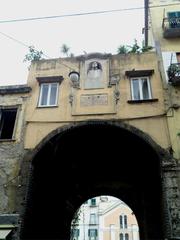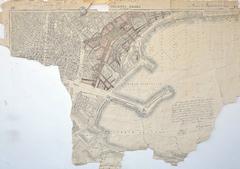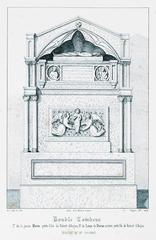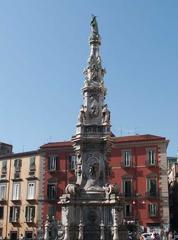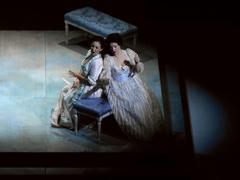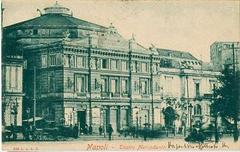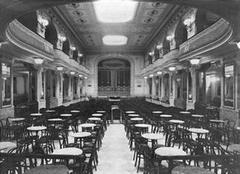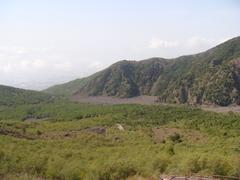Flavian Amphitheater Visiting Hours, Tickets, and Historical Sites in Naples
Date: 16/08/2024
Introduction
The Flavian Amphitheater in Pozzuoli, near Naples, Italy, is a historical marvel that offers a fascinating glimpse into the grandeur of ancient Roman architecture and culture. Constructed during the reign of Emperor Vespasian around 70 AD and completed under his son, Titus, this amphitheater stands as the third-largest in Italy, following the Colosseum and the Amphitheater of Capua (History Hit). Its impressive elliptical structure and capacity to hold up to 50,000 spectators for events like gladiatorial contests and chariot races showcase the engineering prowess of Roman architects, likely the same ones who designed the Colosseum (Spotting History).
Located at the crossroads of major ancient roads from Naples, Capua, and Cumae, the amphitheater was a central hub in the bustling port city of Pozzuoli, known in Roman times as Puteoli. It played a vital role in the social and cultural life of the city, hosting various forms of entertainment that were integral to Roman society (Ancient Origins). However, its history is also marked by periods of abandonment due to natural disasters like eruptions from the nearby Solfatara volcano, which paradoxically helped preserve the structure (Wikipedia). Today, the amphitheater stands as a well-preserved monument, offering visitors a tangible connection to the ancient world and insights into the grandeur of Roman spectacles and engineering.
Table of Contents
- Introduction
- Historical Background
- Visitor Information
- Travel Tips and Nearby Attractions
- Conclusion
- FAQ
Historical Background
Construction and Design
The Flavian Amphitheater was constructed during the reign of Emperor Vespasian around 70 AD and completed under his son, Titus. It is the third-largest Roman amphitheater in Italy, following the Colosseum and the Amphitheater of Capua. The elliptical structure measures 147 x 117 meters, with the arena floor measuring 72.22 x 42.33 meters (History Hit). The design is believed to have been influenced by the same architects who constructed the Colosseum, and it could accommodate up to 50,000 spectators for events like gladiatorial contests and chariot races (Spotting History).
Historical Significance
Located at the crossroads of major roads from Naples, Capua, and Cumae, the amphitheater was a prominent structure in the bustling port city of Pozzuoli (formerly Puteoli). It played a crucial role in the social and cultural life of the city, hosting various forms of entertainment integral to Roman society (Ancient Origins).
Eruptions and Abandonment
The amphitheater’s history includes periods of abandonment due to natural disasters, such as eruptions from the nearby Solfatara volcano. These eruptions partially buried the structure, which paradoxically helped preserve it. During the Middle Ages, the amphitheater was stripped of valuable materials, but the interior remained largely intact (Wikipedia).
Excavations and Preservation
Rediscovered and excavated in the 19th century, the amphitheater revealed a well-preserved structure with intact walls and floors. The underground corridors, where gladiators and animals were kept, are particularly well-preserved and offer valuable insights into the amphitheater’s operation (Summer in Italy).
Christian Martyrdom
The site is notable for its association with early Christian martyrdom. In 305 AD, Saint Proculus and Saint Januarius were persecuted here. According to tradition, both survived being thrown to wild beasts but were later beheaded at the nearby Solfatara (Spotting History).
Architectural Features
The amphitheater’s architecture includes gears and machinery used to lift cages containing wild animals and gladiators to the arena floor. These mechanisms are still visible today. The structure also included a portico, or covered passageway, surrounding the arena, which housed shops and places of worship (Ancient Origins).
Role in Roman Society
Amphitheaters were central to Roman culture, serving as venues for public entertainment and social gatherings. The construction of such grand structures was a means for emperors to gain favor with the public and legitimize their rule. Emperor Vespasian used the construction of the Flavian Amphitheater as part of his efforts to consolidate power and gain popularity (Ancient Origins).
Decline and Rediscovery
After the decline of the Western Roman Empire, the amphitheater fell out of favor and was eventually abandoned. Its partial burial by volcanic ash helped preserve it, and its rediscovery in the 19th century marked the beginning of a new chapter in its history. Today, it stands as a testament to Roman architecture and the enduring legacy of the Roman Empire (Wikipedia).
Visitor Information
Ticket Prices and Opening Hours
The Flavian Amphitheater is open to visitors year-round. Standard ticket prices are €4 for adults, with free entry for children under 18 and reduced rates for EU citizens aged 18-25. Opening hours are from 9 AM to 5 PM, with extended hours during the summer months. It is recommended to check the official website for the most current information on visiting hours and ticket prices.
Accessibility
The site is partially accessible to visitors with limited mobility. The ground level and some of the underground corridors can be explored, but certain areas may be challenging to navigate. It is advisable to contact the site in advance to plan your visit.
Travel Tips and Nearby Attractions
Guided Tours and Special Events
Guided tours are available and highly recommended to fully appreciate the history and architecture of the amphitheater. Special events, such as historical reenactments and educational workshops, are occasionally held at the site.
Photography Tips
The amphitheater offers numerous opportunities for photography, particularly in the early morning or late afternoon when the light is optimal. Be sure to capture the intricate details of the underground corridors and the impressive scale of the arena.
Nearby Historical Sites
While in Pozzuoli, consider visiting other nearby attractions such as the Temple of Serapis, the Rione Terra archaeological site, and the Solfatara volcano. These sites provide additional context and enrich the historical experience of the region.
Conclusion
The Flavian Amphitheater in Pozzuoli is a remarkable example of Roman engineering and a significant historical site. Its construction, use, and preservation offer valuable insights into the social, cultural, and architectural achievements of the Roman Empire. As a well-preserved monument, it continues to captivate visitors and scholars alike, providing a tangible connection to the ancient world. Plan your visit today to explore this fascinating site and immerse yourself in the grandeur of ancient Rome.
FAQ
Q: What are the visiting hours for the Flavian Amphitheater?
A: The amphitheater is open from 9 AM to 5 PM, with extended hours during the summer. Always check the official website for the most up-to-date information.
Q: How much do tickets cost?
A: Standard tickets are €4 for adults. Children under 18 can enter for free, and there are reduced rates for EU citizens aged 18-25.
Q: Is the Flavian Amphitheater accessible to visitors with disabilities?
A: The site is partially accessible, with the ground level and some underground corridors available for exploration. Contact the site in advance for more information.
Q: Are guided tours available?
A: Yes, guided tours are available and recommended to fully appreciate the site’s history and architecture.
Q: What nearby attractions should I visit?
A: Nearby attractions include the Temple of Serapis, the Rione Terra archaeological site, and the Solfatara volcano.
Call to Action
Don’t miss out on visiting the Flavian Amphitheater in Pozzuoli. Download the mobile app Audiala for more information, check out other related posts, and follow us on social media for the latest updates.
